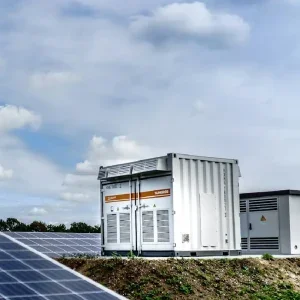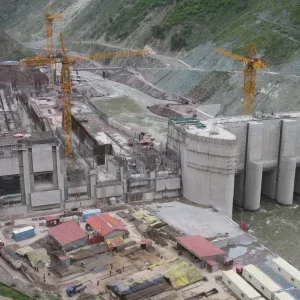
As in other economies the key driver of change is the environment. China, as the unelected leader of fast growing economies, has long resisted what it sees as climate platitudes from the developed economies on climate change and, specifically, emission reductions. Economic growth, it contends, should not be undermined by emission reductions.
But while its official attitude to the UN climate process remains unchanged, with China refusing to accept the word ‘commitment’ in respect of emissions reductions in the final communiqué at November’s COP19 UN climate summit in Poland, the country has been accelerating its investment in renewable technologies and has become a global leader in solar panel manufacture. China also has introduced an emission intensity reduction target of 40-45% by 2020, as compared with a 2005 baseline.
To meet its emission intensity target and maintain supply security China has to change its thermal generation mix from predominantly coal to gas-fired. This being so the main challenge faced is gas supply security, with gas imports almost doubling from 12% of consumption in 2010 to 22% in 2011. Faced with this challenge, last month’s announcement of accelerated market reforms to protect supply security came as little surprise.
China has announced plans to accelerate energy price reforms with the aim of introducing a pricing mechanism that will see energy prices more closely correlated with the market price. The main objective of the reform, which has neither been detailed nor been given a date of introduction, is to promote supply security particularly with respect to gas, with other intended benefits of the planned reform being market competition and energy efficiency.
Currently electricity prices are strictly regulated with on-grid costs set for all generation fuels (hydro, thermal and nuclear) and adjusted, usually annually, to reflect fuel cost variability. Transmission and distribution costs are also state-controlled with the main pricing variable being the taxes and surcharges applied to the tariffs that vary between province and the major cities. Indeed such is the variability in the tax and surcharge tariff element that there are over 1000 different electricity tariffs in China, which only adds to market opacity.
A more market-led pricing approach would see prices more closely reflect underlying market prices and allow more accurate forward price forecasting, while removing some of the regulatory risk inherent in current energy pricing.
Announcing the reforms the National Development and Reform Commission (NDRC) said: "We will promote a pricing mechanism that is mainly decided by the market … We should hand over prices that can be set by market forces to the market … We will push forward price reforms in sectors including water, oil, natural gas, power, transportation and telecommunications"
This latest reform initiative follows an NDRC announcement in the summer that it has agreed a carbon tax regime mechanism that it aims to introduce during the current 12th Five Year Plan (2011-15). While there are no further details on the planned tax regime it is likely that the scheme will be correlated with economic performance, with China currently focused on reducing its emission (carbon) intensity as opposed to applying absolute emission reductions.
The first of seven pilot emission trading schemes launched in Shenzen in June adjusts emission reductions in line with the underlying economy to ensure that economic growth is always protected. But other pilot schemes launching by year-end in Guangdong, Beijing and Shanghai will mandate absolute emission reductions, which suggests China remains uncertain towards the structure of its national emission market planned for 2016.
The impact of these reforms should provide for more transparent pricing in the electricity supply market. But the impact on supply competition appears less certain, with new supply market entrants unlikely in the medium term. Where there will be more competition is in the upstream sector, and particularly in gas infrastructure with the reforms aimed at encouraging more foreign investment into the sector.
China’s decision to announce reforms midway through the current Five Year Plan suggests [it] is becoming increasingly receptive to infrastructure investment concerns and supply security.
China’s decision to announce reforms midway through the current 12th Five Year Plan suggests the country is becoming increasingly receptive to infrastructure investment concerns and supply security. But there is no suggestion that China intends to significantly loosen state control over the downstream energy sector, although further reforms may be forthcoming in the 13th Five Year Plan (2016-20) that could reflect any decisions made at the Paris UN climate summit in December 2015, which will aim to agree a new global climate deal to be effective from January 2020.
While these reform announcements indicate the start of a slow transition to a more market- led energy price mechanism it would be dangerous to read too much into the planned reforms until the detail has been confirmed. Indeed these announcements imply that regulatory risk will remain a key uncertainty in China’s fast-developing energy sector in the medium-term with more reform plans expected in respect to global and domestic energy market developments.
*Jeremy Wilcox is managing director of the Energy Partnership, an independent Thailand-based energy and environment consulting firm. Tel:+66 2 163 4073; Mobile: +66 8 6099 3375
(Originally published in MPS January 2014)






